More Stories

By Geoff Bansen - News 12 Meteorologist
Have you noticed that our winters don't seem to be as cold as they used to?
You're not alone; and it's not your imagination!
In a study done by New Jersey-based Climate Central, the average winter temperature for our area (using New York City as a centralized example) has increased by an astounding 3.6 degrees since 1970.
 The average winter temperature in 1970 has risen close to 4 degrees over the past 50 years.
The average winter temperature in 1970 has risen close to 4 degrees over the past 50 years.
Naturally, the average number of abnormally warm winter days has gone up as well. Half a century ago, the average was about 39 out of the 90 winter days (91 during leap years). Presently, we are averaging more than half of the season.
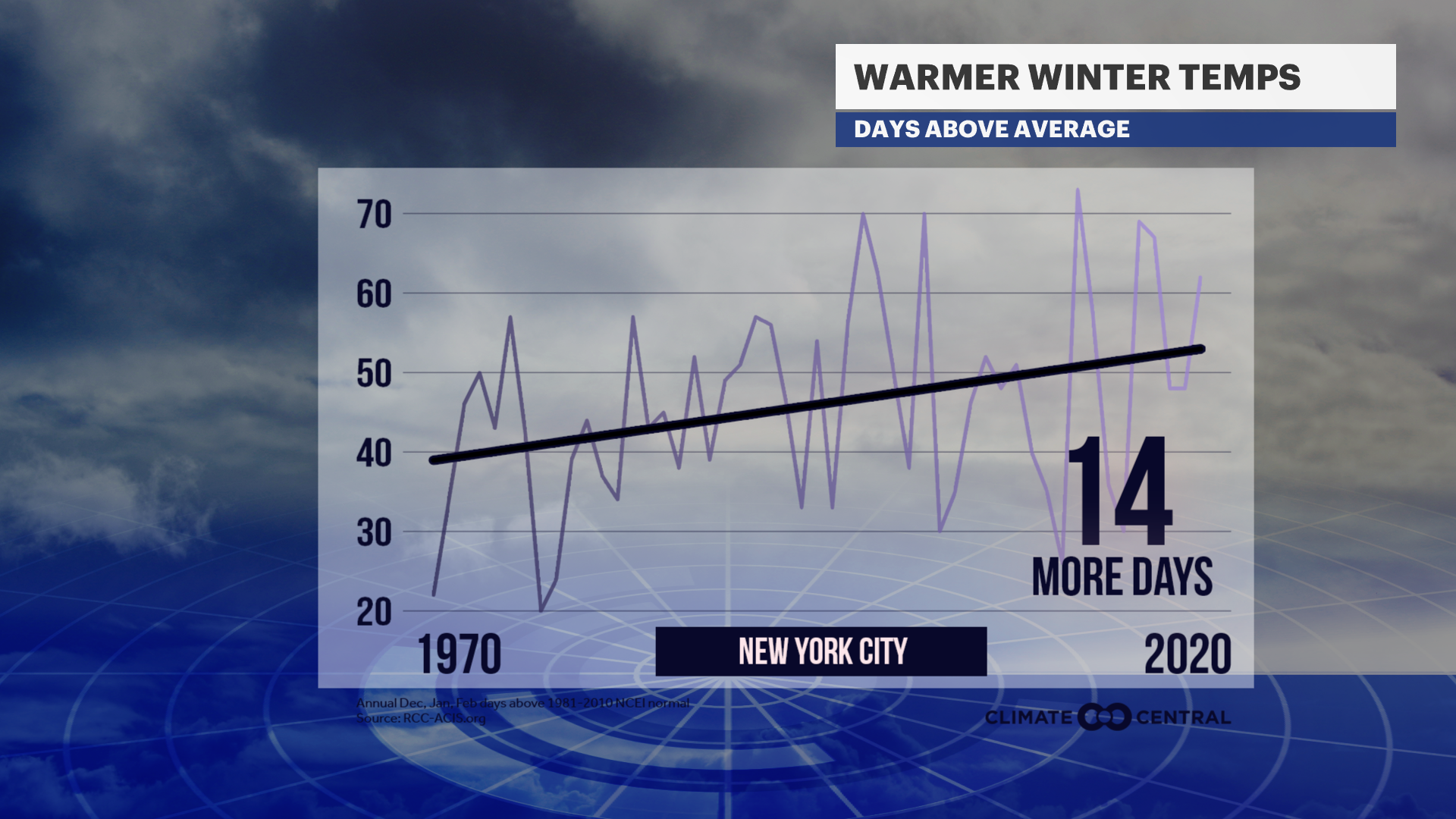 More and more winter days are becoming warmer than they used to be.
More and more winter days are becoming warmer than they used to be.
If you think that our area may be the exception rather than the rule here, get this: Climate Central found that winter is the
fastest warming season for most of the country - 38 of the 49 states it analyzed. And fastest or not, 98% (236/242) of all cities had at least some increase of winter temperatures.
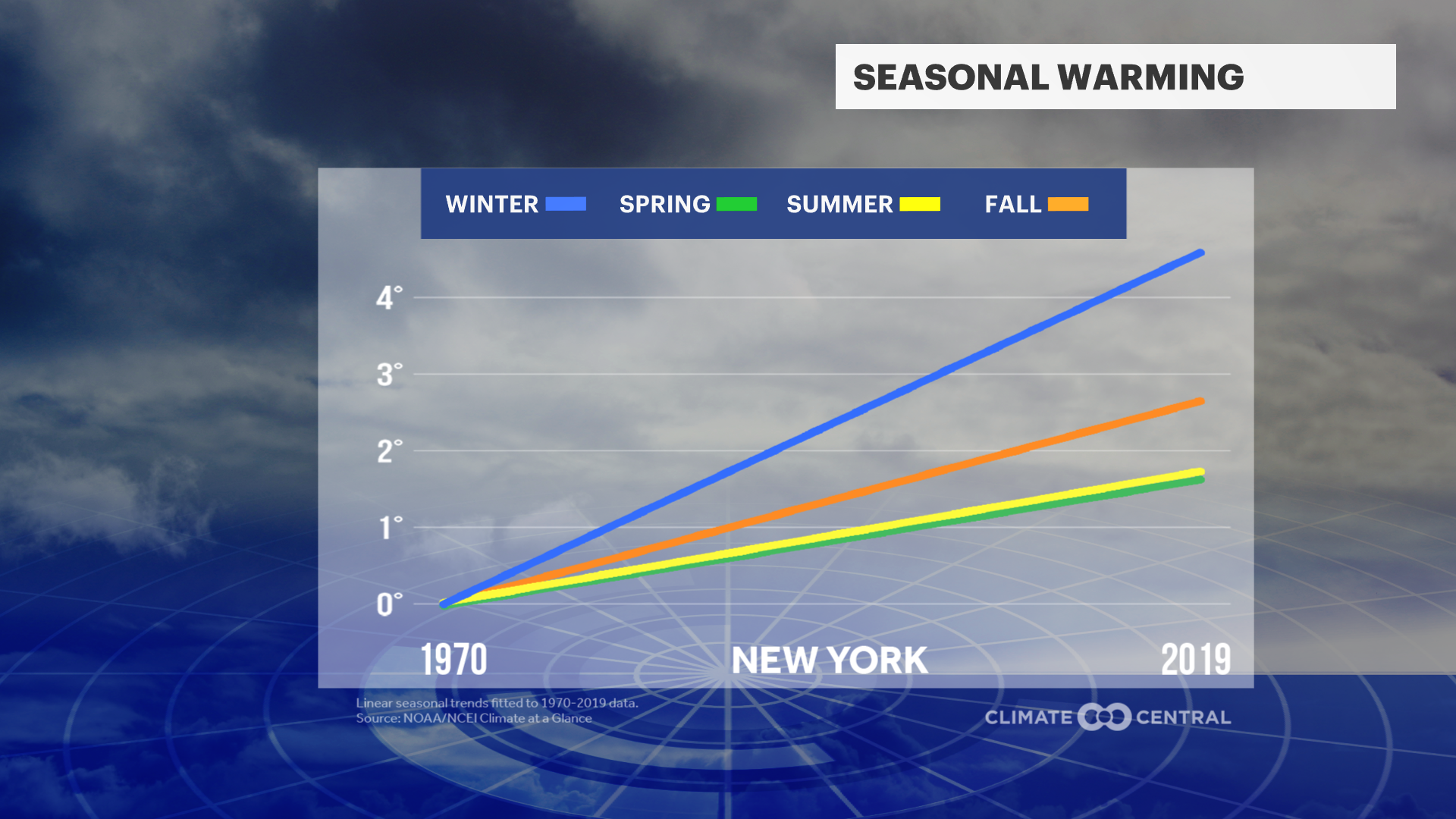 For New York City and most of the Northeast, temperatures in winter are increasing faster than in any other season.
For New York City and most of the Northeast, temperatures in winter are increasing faster than in any other season.
Of those 38 states, the ones with the fastest warming trends are located in the Northeast quadrant of the country. For the remaining 11 states, nine are seeing the transitional seasons (spring and fall) warming the quickest. The only states in which summer is the season with the most rapid warming pace are Washington and Oregon, which could be exacerbating the recent wildfire seasons.
For all the cold and snow haters out there, these alarming trends may not seem so bad; in fact, they may be welcomed. But there are many factors to consider before writing off winter warming.
First, any savings from heating energy have been offset by increased air conditioner usage during the warm weather months. Perhaps more importantly, we are also seeing residual effects on the rest of the year, starting with the earlier arrivals of spring. When seasonal balances become shifted, you can see negative impacts such as irregular growing seasons, prolonged allergy periods, and longer lifespans for disease-carrying insects, just to name a few.
All of this doesn't mean that cold and snowy winters can't happen. As we have seen several times during just this past decade, winters can be both warmer than average and snowier than average. Timing and weather patterns alone can often make for a couple of nice blizzards or bitter blasts of air.
But what the above information does suggest is that there is simply less cold air to go around than there used to be. Broader climate studies agree, and there is nothing to suggest that the current course will change over the next 50 years unless there is a change in the paradigm.
More from News 12
1:52
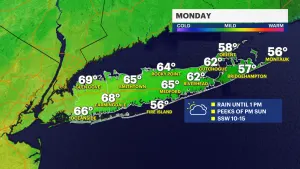
Rainy Monday morning on Long Island; dry stretch starts Tuesday
1:52
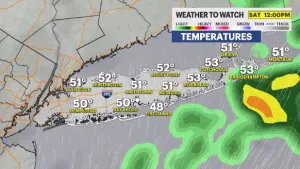
WEATHER TO WATCH: Rain could make for a soggy New Year's Eve
2:07
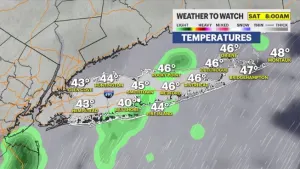
WEATHER TO WATCH: Rain could dampen New Year's Eve plans
2:04
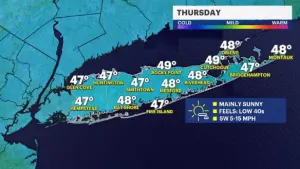
Weather warmup continues through Friday, possible rain for weekend
2:09

Sunrise solar eclipse is Thursday – everything you need to know!
1:50
